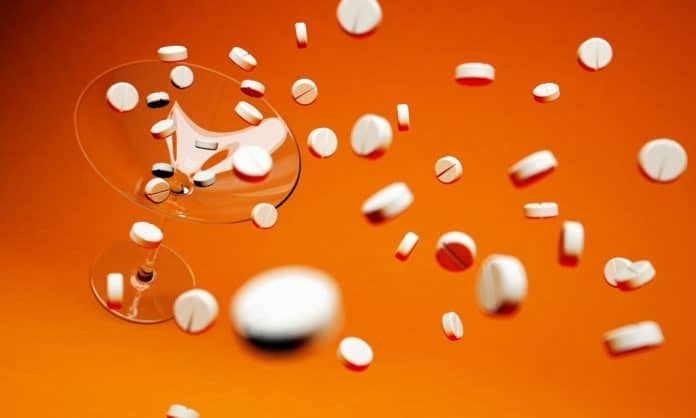Last Updated on August 3, 2023 by The Health Master
Physical and Chemical parameters of Excipient
Experts delve into the significance of physical and chemical parameters, such as particle size and surface area, on excipient functionality and drug quality.
The Role of Excipients in Drug Formulations
Unlike active pharmaceutical ingredients (APIs), the quality of excipients cannot be adequately assessed solely through chemical testing as per pharmacopoeia standards.
Excipients’ effectiveness in a formulation depends on various physical, chemical, and other parameters that define their efficiency, ultimately impacting the therapeutic effect of the drug.
Quality by Design (QbD) in Excipients
Dr. Ravleen Singh Khurana, Managing Director of Nitika Pharmaceutical Specialties and Secretary of the International Pharmaceutical Excipient Council (IPEC) India, emphasizes the importance of Quality by Design (QbD) in evaluating excipients.
While APIs can be more easily assessed through pharmacopoeia chemical testing, excipients’ parameters significantly affect the formulation’s parameters, resulting in distinct formulation characteristics.
Physical and Chemical parameters Affecting Excipient Functionality
Several physical and chemical parameters play a crucial role in determining the functionality and performance of excipients.
These parameters include:
- Particle size
- Particle distribution
- Surface area
- Flow properties
- Molecular weight
- Purity
- Compatibility
- Assay
- Moisture content
- Solubility
- Viscosity
- Density
- Crystallinity
Conventional Approach vs. QbD Approach
In the traditional approach to ensuring quality, testing and inspection are relied upon, leading to intensive data submission, a rigid process, and a focus on reproducibility and historical specifications.
On the other hand, the QbD approach involves building quality into the product and process based on scientific understanding.
This method involves knowledge submission, a flexible process, and a focus on robustness and performance requirements.
Case Study on Magnesium Stearate
Dr. Khurana illustrates the importance of physical parameters using Magnesium Stearate, a widely used hydrophobic lubricant in tablet formulations.
A study published in the International Journal of Pharmaceutical Sciences and Research (IJPSR) in 2012 compared Magnesium Stearate from Nitika Tablube and an MNC source in the formulation development of a highly soluble drug, metformin hydrochloride.
The research demonstrates that the particle size and surface area of Magnesium Stearate, along with its concentration and lubrication time, significantly influence the parameters of the blend or tablet, such as disintegration time, hardness, and most importantly, dissolution.
Emphasizing the QbD approach, it is suggested that by evaluating the functional related characteristics (FRCs) of excipients like Magnesium Stearate Tablube of Nitika, the formulation can achieve desired critical quality attributes (CQAs) like dissolution profile and disintegration time, which may not be achievable through conventional practices.
Disadvantages of Conventional Practices
The conventional approach to formulation development with excipients is associated with various disadvantages, including:
- Poor understanding of inputs and responses
- Frequent non-conforming incidents (NCI)
- Time-consuming investigations of NCI
- Rejected batches
- Higher manufacturing costs
- Changing process requirements
- Stringent regulatory approvals
Recommendation: Embracing QbD for Excipient-based Formulations
Experts recommend adopting the Quality by Design (QbD) approach in the formulation development process concerning excipients.
This will ensure predefined critical quality attributes (CQAs) of the formulation, considering various physicochemical and performance characteristics of the excipient, thereby optimizing the overall drug quality.
USP establishes Program Unit Team on testing of Excipients
Pharma Companies to mention excipients on medicine strips, soon
IPC set to harmonise 31 General Chapters & Excipient Monographs of IP
Excipients industry may face similar fate like Bulk drugs: Pharmexcil
Kerala SDC urges IPEC to follow USFDA guidelines to ensure quality of excipients used in drugs
There is need for clear definition of excipients and its GMP: IPEC
Illegal Drugs worth more than Rs. 50 Lakh seized from warehouses in Agra
USFDA gives nod to market this cancer treatment generic injection
Drug recall: Sun Pharma, Alembic recall these drugs due to this reason
Indian Medical Device Industry urges Govt to Recall Import Order for Pre-Owned Medical Devices
Latest on Indian Pharmacopoeia Commission (IPC)
European Medicines Agency issues EU GMP certification to Indoco: Baddi
Lok Sabha passes The Jan Vishwas Bill to Amend Drugs and Cosmetics Act
NPPA fixed ceiling prices of 915 scheduled formulations till mid July
For informative videos by The Health Master, click on the below YouTube icon:
For informative videos on Medical Store / Pharmacy, click on the below YouTube icon:
For informative videos on the news regarding Pharma / Medical Devices / Cosmetics / Homoeopathy etc., click on the below YouTube icon:
For informative videos on consumer awareness, click on the below YouTube icon:









